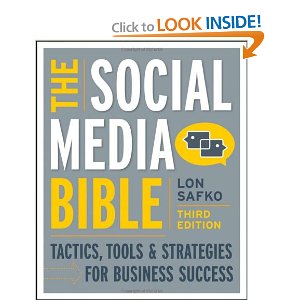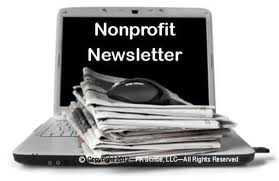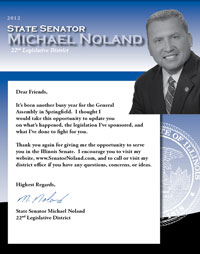 So, I managed to sneak away to Michigan for the long Labor Day weekend. During that time, I started reading “The Social Media Bible” by Lon Safko. As the pages turned and I read about marketing within a social media framework (including tactics, tools and strategies), I can’t tell you how many “ah-ha” and “hmmmm” fundraising moments that I experienced. Over the next few days, I will share a few of those moments with you and hope to spark some discussion.
So, I managed to sneak away to Michigan for the long Labor Day weekend. During that time, I started reading “The Social Media Bible” by Lon Safko. As the pages turned and I read about marketing within a social media framework (including tactics, tools and strategies), I can’t tell you how many “ah-ha” and “hmmmm” fundraising moments that I experienced. Over the next few days, I will share a few of those moments with you and hope to spark some discussion.
In the very early pages of this book (page 6-7), the author shares a statistic that is probably very familiar:
“Studies have shown that: An angry customer will tell up to 20 other people about a bad experience. A satisfied customer shares good experiences with 9 to 12 people. . . With the use of social media like blogs, Twitter, and Facebook, those 20 people can quickly become 20,000 or even 200,000!”
The next few pages contain social media stories about scorned customers who used social media to exact justice. One scary example involves a musician, Dave Carroll, who had a bad experience with United Airlines and told the world by producing and posting a music video about it on YouTube. I’ve embedded the video below so that you can become one of the 12 MILLION people who have viewed it.
[youtube=http://www.youtube.com/watch?v=5YGc4zOqozo]
As I read this portion of the book and viewed the YouTube video, I realized this is one of the big reasons that your non-profit organization needs to get involved in social media. You need to know what people are saying about your brand, especially before it becomes a YouTube video that gets viewed by millions of people.
However, this first thought passed quickly, and a second thought came into focus:
Does your non-profit organization know whether its clients, volunteers and donors are having good experiences or bad experiences?
 And I am not just asking this question within a social media context. This big picture question struck me as one of those “generative questions” with which your non-profit board of directors should be OBSESSED.
And I am not just asking this question within a social media context. This big picture question struck me as one of those “generative questions” with which your non-profit board of directors should be OBSESSED.
- Do we know the answer to this question?
- How do we know?
- What data are we collecting?
- What is the data saying?
- How do we improve what the data is telling us?
Generative questions promote creative thinking and create new knowledge. Good board meetings and boardroom discussions should be centered around these types of questions.
This feedback from clients, volunteers and donors is gathered in a number of different ways from a number of different sources and places.
- Are your board volunteers meeting with donors outside of the solicitation process?
- How are you capturing that feedback from those stewardship meeting?
- Are you using surveys or focus groups with your clients and volunteers?
- Are you asking the right questions?
- How do you aggregate that data and report it back to the board in a meaningful way?
Too often, our under-resourced non-profit organizations get focused on the very basics of just providing service to clients, recruiting volunteers and soliciting donors. We don’t take a step back to check-in with people to see if we’re doing a good job.
What is the harm of not doing so? Circle back and re-read the first few paragraphs of this blog post . . . high turnover rates and extremely bad word of mouth that can spread like wildfire.
In the end, this generative question gets to the root of everything and answers this question:
Are you on a sustainable path?
Let’s talk about this today. Please scroll down and take 60 seconds of your time this morning by asking a question or answering any of the previous or following questions.
Does your agency have a social media presence? How do you listen to social media conversations? Is someone specifically tasked with this job? How do you monitor what is being said on the street? Do you have an example of how you intercepted “bad word of mouth” and addressed it before it spread like wildfire? How did you do so?
Here’s to your health!
Erik Anderson
Founder & President, The Healthy Non-Profit LLC
www.thehealthynonprofit.com
erik@thehealthynonprofit.com
http://twitter.com/#!/eanderson847
http://www.facebook.com/eanderson847
http://www.linkedin.com/in/erikanderson847



























